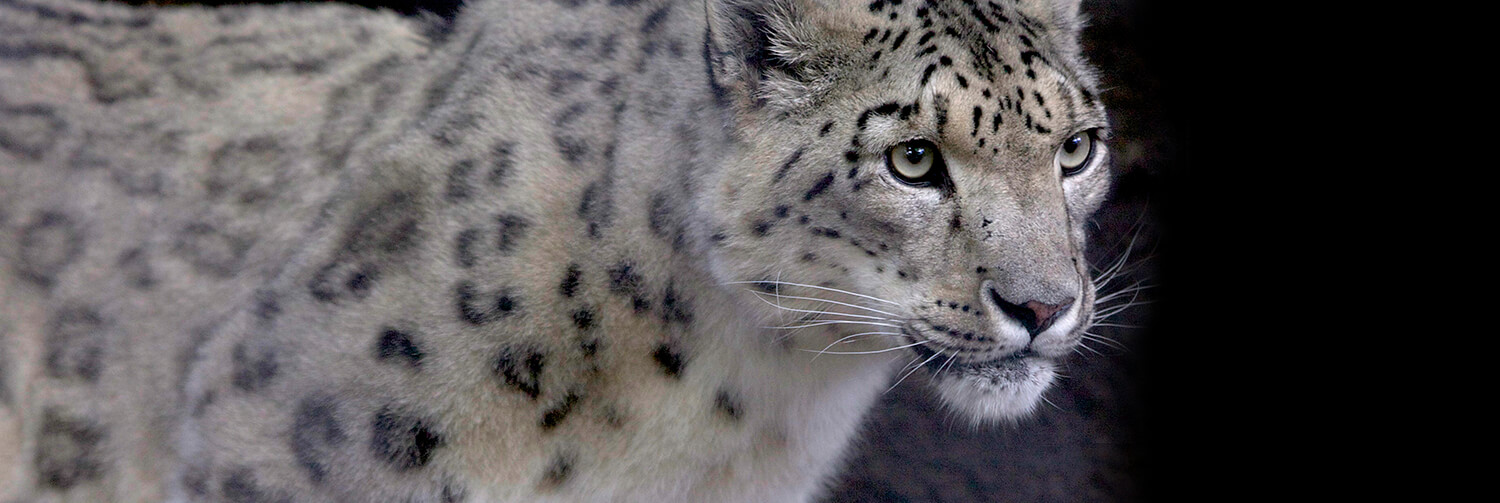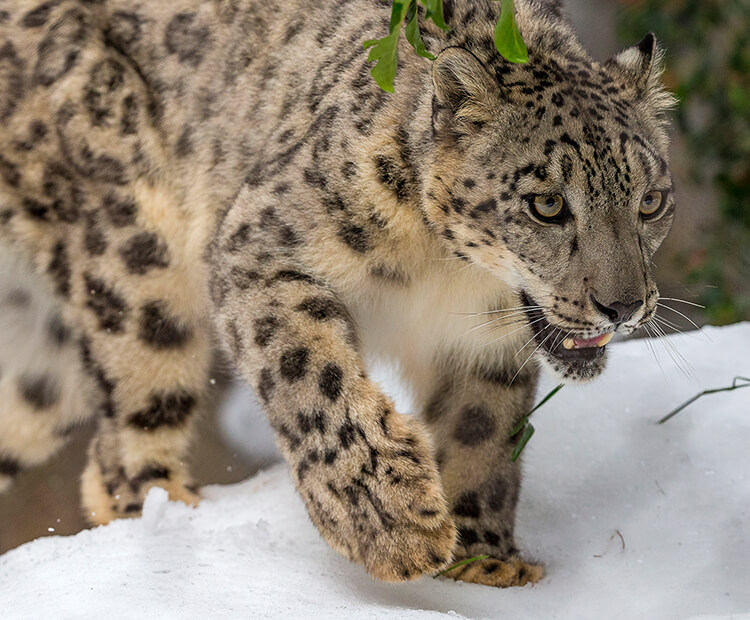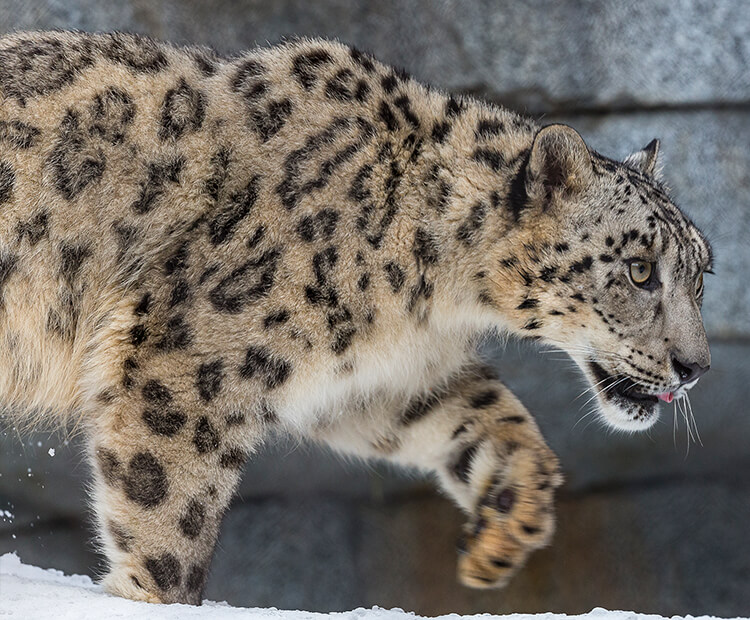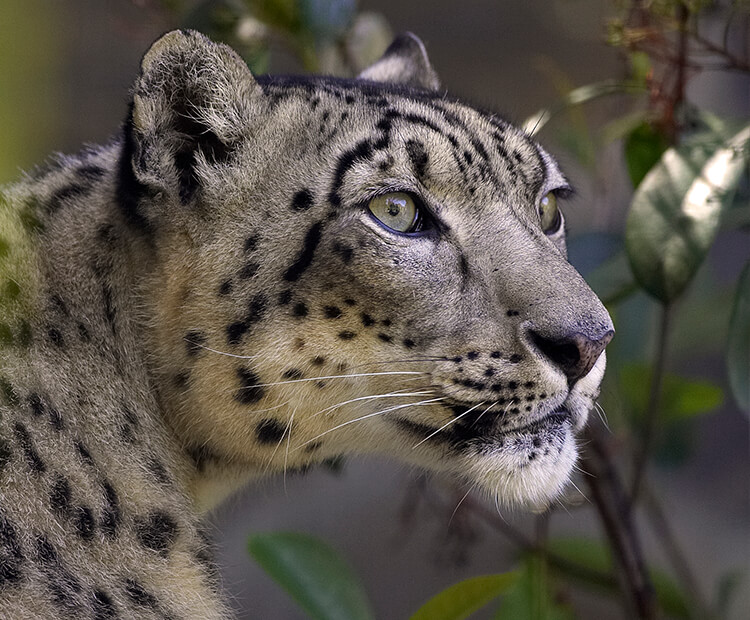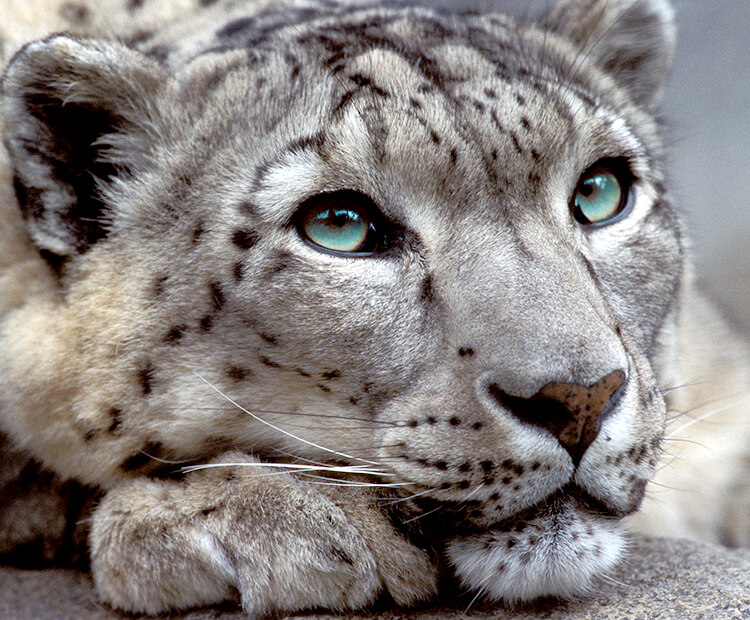STATUS
Vulnerable


Snow leopards are top predators in their environment, and their prey includes Siberian ibex (Capra sibrica), blue sheep (Pseudois nayaur), Himalayan tahr (Hemitragus jemlahicus), argali (Ovis ammon) and marmots (Marmota himalayana). Without the snow leopard, the ecological balance would be disrupted. For example - herbivore populations will increase resulting in changes in the vegetation, that will affect other wildlife and also disrupt the important ecosystem services.
The snow leopard's powerful build allows it to scale great steep slopes with ease. Its hind legs give the snow leopard the ability to leap six times the length of its body. A long tail provides balance and agility and also wraps around the resting snow leopard as protection from the cold.
For millennia, this magnificent cat was the king of the mountains. The mountains were rich with their prey such as blue sheep, Argali wild sheep, ibex, marmots, pikas and hares. Snow leopards are found in 12 countries-including China, Bhutan, Nepal, India, Pakistan, Afghanistan, Russia, and Mongolia-but their population is dropping.
It is estimated that the global population of snow leopard is around 4,000 individuals. Snow leopards live in extremely difficult terrain and the fact that only 5% of snow leopard habitat is actually surveyed for population assessments implies that there is a lot to learn about this elusive species.
Globally, snow leopards are sparsely distributed across 12 countries in Central Asia, from southern Russia down to the Tibetan plateau, including Mongolia, China, Afghanistan, Pakistan, Nepal & India.

STATUS
Vulnerable

SCIENTIFIC NAME
Panthera uncia

POPULATION
total estimated 4,080-6,590

LENGTH
2-5 feet.

WEIGHT
77-165 pounds

HABITAT
MOUNTAINS
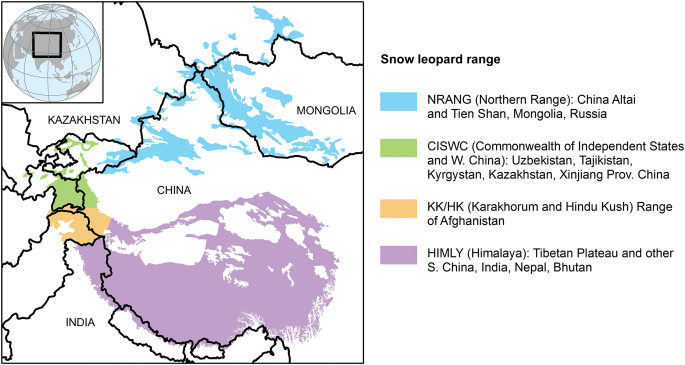
Snow leopards play a key role as both top predator and as an indicator of the health of their high-altitude habitat. If snow leopards thrive, so will countless other species.
Snow leopards use their long thick tail to balance, they also wrap their tail around to keep themselves warm
Snow leopards do not roar, instead they mew, hiss & make a non-aggressive puffing sound called "chuff"
Habitat loss, poaching and increasing conflict with communities have seen the world's snow leopard population reduce drastically. Climate change is now putting the future of their mountain home at even greater risk.
The snow leopard habitat range continues to decline from human settlement and increased use of grazing space. This development increasingly fragments the historic range of the species
